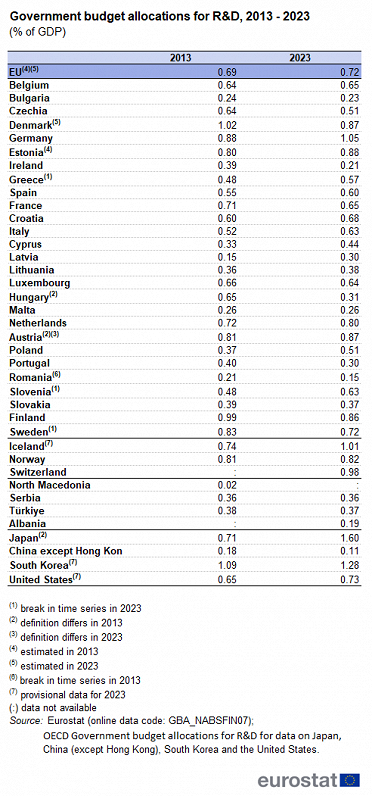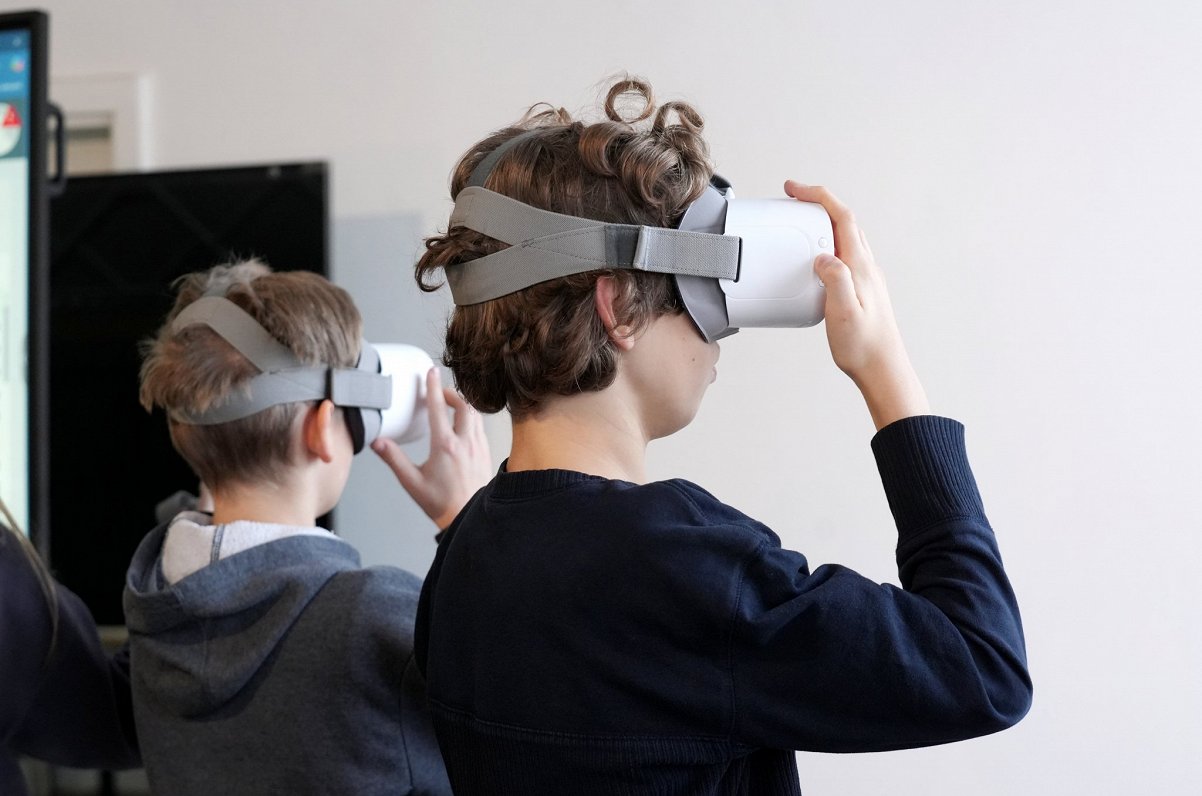Statistics on Government Budget Allocations for R&D (GBARD) provide data measuring government support to research and development (R&D) activities. In the recent document Political Guidelines for the next European Commission 2024-2029, investment in R&D is put ‘at the centre of our economy. We will increase our research spending to focus more on strategic priorities […]. Europe must also be at the cutting edge between emerging science, tech and industry, the nexus that will make this tech revolution faster and more transformative.’

GBARD covers not only government-financed R&D performed in government establishments but also government-financed R&D in business enterprise, higher education, and private non-profit sectors.
In 2023, the total provisional government budget allocations for R&D (GBARD) across the EU stood at €123 557 million, equivalent to 0.72% of GDP.
In Latvia’s spend was €118 million. This is significantly more than the €32 million spent in 2013, and represents a doubling from 0.15% of GDP to 0.30% of GDP even though it tripled in terms of money spent (the economy was growing faster than R&D spending).
But there is still plenty of room for improvement. The highest allocations per person were recorded in Luxembourg (€765.3), followed at a distance by Denmark (€552.4) and Germany (€522.6). On the other hand, the EU countries with the lowest R&D budget allocations per person were Hungary (€64.1), Latvia (€62.7), Bulgaria (€33.1) and Romania (€25.9).

R&D spending in EU 2013-2023
Photo: Eurostat
Select text and press Ctrl+Enter to send a suggested correction to the editor
Select text and press Report a mistake to send a suggested correction to the editor
Tell us about a mistake
